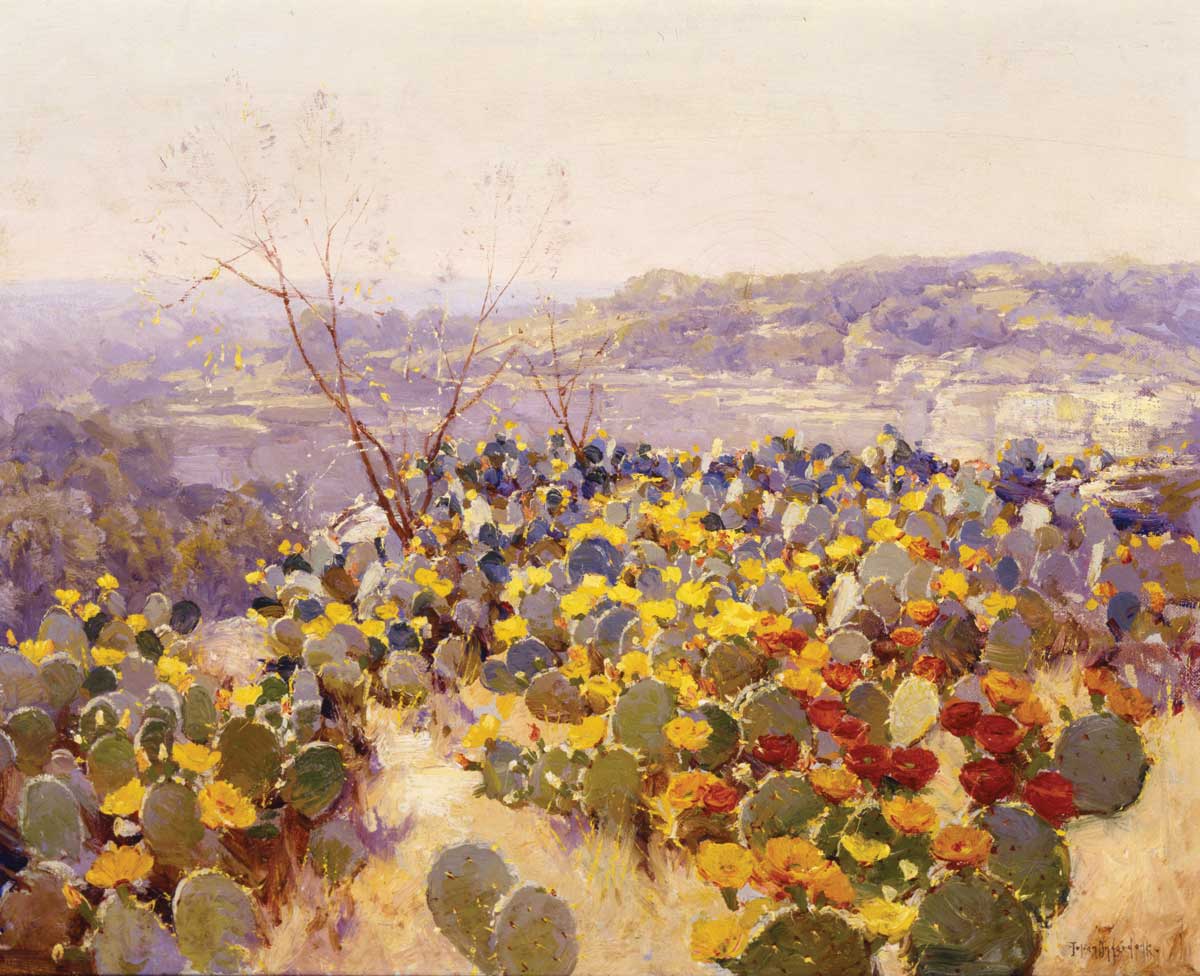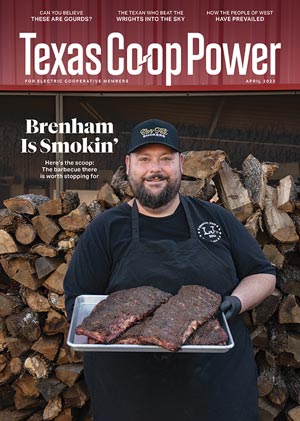Much like Claude Monet had his waterlilies—the subject of the French impressionist’s most celebrated series of paintings—Julian Onderdonk had his bluebonnets. Born in San Antonio in 1882, Onderdonk painted sweeping landscapes of his native South Texas, producing majestic scenes of sun-kissed dusty roads, blooming coreopsis fields and golden sunsets. But it was his series featuring Texas’ state flower that had early 20th-century Texans clamoring for an Onderdonk canvas.
“He became known as the bluebonnet painter, but that wasn’t how he identified himself. That was just one of the things he painted,” says Harry Halff, a San Antonio-based art dealer who specializes in early Texas art. “But he captured the color of the bluebonnets so well. And he did an amazing job of capturing the special light that we have in South Texas. With Julian’s work, sometimes you almost feel like you can tell the temperature of the day he painted. That’s really an innate talent.”
Onderdonk’s father, Robert Jenkins Onderdonk, taught art in Dallas and San Antonio, helped found several influential Texas art organizations, and painted a 1903 work titled Fall of the Alamo that resides in the Texas Governor’s Mansion. But the younger Onderdonk didn’t rely on his genes alone. While still a teenager, he traveled to New York, where he studied with the likes of William Merritt Chase, the revered American impressionist.
Onderdonk spent nearly a decade on the East Coast, where he developed his penchant for plein-air, or open air, painting but returned to San Antonio in 1909. This homecoming was a turning point in the young artist’s career. Once he started depicting the distinctive surroundings of his childhood home—he’d hike out through the neighboring hills armed with an easel, canvas and paints—people began to take notice.
“He was very popular with a lot of the old San Antonio families,” says Halff, who wrote the catalogue raisonné on Onderdonk and whose great-grandparents once purchased a painting from the artist. “His smaller works were great wedding gifts, and a lot of them are still with the same families who bought them from Julian. He also got extraordinarily high prices for that period.”
According to Halff’s research, Onderdonk’s large pieces would go for around $450—“essentially the cost of a Model T”—while his smaller works cost in the neighborhood of $75 to $100. Today, depending on the size and subject matter (bluebonnets still reign supreme), an Onderdonk painting could garner anywhere from $30,000 to several hundred thousand dollars. “It’s still the price of a car,” Halff says. “It just might be a Ford or a Ferrari.”
For art lovers with not-so-deep pocketbooks, classic Onderdonk works can be viewed at a host of major Texas museums, including the Dallas Museum of Art, the Museum of Fine Arts in Houston and the Witte Museum in San Antonio. The largest selection of Onderdonk works—close to 100—resides at the Witte, including two paintings that hung in the White House during President George W. Bush’s administration: Cactus Flowers and Chili Queens at the Alamo.
Marise McDermott, president and CEO of the Witte, says Dawn in the Hills is her favorite Onderdonk work in the museum’s collection. The painting is a celestial scene of a Texas daybreak that Onderdonk completed just before his death of an acute intestinal obstruction and appendicitis at age 40 in 1922. “He died literally as this painting was drying,” says McDermott. “I just can’t even believe how beautiful it is. It’s so ethereal.”
The Witte also houses Onderdonk’s archives and his painting studio. The museum moved the structure, which an Onderdonk descendant donated, from its original location on West French Place and installed it on the museum grounds. The Witte’s ties to the Onderdonk family trace back nearly a century. Eleanor Onderdonk, Julian’s younger sister, served as the museum’s curator from 1927 until 1958.
“She was responsible for so much of the Witte Museum’s art, including her brother’s,” says McDermott, a member of Bluebonnet Electric Cooperative. “She was very close to him and had a beautiful sense of why he was unusual.”
An artist in her own right, Eleanor once wrote of her brother: “It is evident that Julian was after something that no one else had ever gotten—an interpretation of the Southwest landscape, its essence in form and color so elusive and so subtle that the average person misses the closeness of values in the unity of color, live gray tones that vibrate. …
“It is impossible to look at any of Julian’s paintings and not see the man who looked at nature with wide-open eyes, analyzed, studied and then created.”



